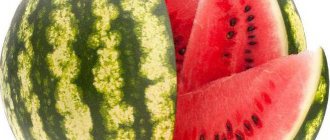The diet of a nursing mother is very limited. Women have to give up many familiar products and look for alternatives, especially in the first months of breastfeeding. Therefore, mothers are interested in whether spinach can be consumed while breastfeeding. Today we’ll talk about this product, and figure out how to eat spinach correctly and when, and also introduce you to delicious and healthy recipes.
Spinach is not very popular in Russia, but it can be very useful for mothers during breastfeeding.
The benefits of spinach for the female body
In France, this leafy plant is called the “king of vegetables.” Not surprising, because its composition is very valuable for the human body. It is recommended for baby food and approved by nutritionists. Pediatricians note the benefits of spinach during breastfeeding or mixed feeding, because it contains:
- vitamins of group A, B, C, E, PP, H, a huge amount of vitamin K, which increases the elasticity of joints (in 100 grams of the product its amount exceeds the daily norm);
- Potassium, magnesium are minerals that are essential for restoring women’s health after childbirth. They have a beneficial effect on the cardiovascular and nervous systems;
- selenium and phosphorus are substances that improve blood circulation and increase resistance to stress. Selenium is even able to fight cancerous tumors in the early stages of development.
Only a plant from your own garden can provide the greatest benefit. The store-bought product should be chosen carefully: it should be a rich green color without yellow spots. Dry leaves indicate a stale vegetable that has already lost some of its valuable substances.
Interesting fact! The first mention of spinach was found in the 6th century AD. Today, world-class stars regularly use it to maintain their figure and stay healthy.
In addition to the above, spinach is rich in amino acids, chlorophyll, carotene, and is a source of dietary fiber necessary to maintain normal intestinal function. Eating spinach at least 2 times a week has a healing effect on the body of a nursing mother:
- mood improves, stress resistance increases;
- the condition of teeth, skin, hair, nails improves;
- hormonal levels stabilize;
- the functioning of the digestive organs improves;
- fatigue goes away, a surge of new strength is noticeable;
- Appetite increases, metabolism is normalized, thanks to this the mother notices a good flow of milk.
A young woman’s vision often deteriorates due to lack of sleep and general fatigue. Spinach helps restore vision by relieving eye strain.
Rules for introducing into the diet of a nursing mother
It is recommended to introduce spinach into the diet 1 month after birth. For the first time, eat no more than one leaf in the morning. If you do not notice signs of allergies or colic, you can increase the amount of product. Negative manifestations are possible within 1–2 days after consumption. You should not eat the product or dishes containing it more than 2-3 times a week.
| Baby's age | How much can you eat |
| 1 month | Not recommended |
| 2 month | It is allowed to be introduced into the diet starting from 1 leaf. |
| 3 month | You can eat 2-3 times a week in small quantities. |
Spinach for breastfeeding
Any greens during lactation require careful introduction into the diet. Many women are interested in whether a nursing mother can sometimes eat spinach? Pediatricians do not recommend eliminating it completely, but recommend caution. Doctors note the following advantages of the vegetable for a young mother:
- Normalizes the level of vitamin D in the body of a woman and baby.
- Neutralizes constipation, which often occurs in the mother immediately after childbirth, as well as in the child during the maturation of the gastrointestinal tract.
- All the vitamins and microelements of spinach will certainly penetrate through breast milk into the baby’s body.
Despite the useful composition, doctors, when answering the question of whether spinach can be eaten while breastfeeding, warn about possible negative consequences:
- It is better not to use the plant for people with a tendency to allergies.
- Mothers who overuse spinach risk causing stomach upset in their infants.
- Greens “from the market” are often treated with pesticides and herbicides that poison the body.
If you notice changes in your child’s stool, an unclear rash or watery eyes, you should immediately give an antihistamine and exclude spinach from the diet. If allergy symptoms do not go away, it is better to consult a pediatrician.
Beneficial features
Spinach contains useful elements, including fiber, vitamins A, C and E, group B, niacin, magnesium, zinc, phosphorus and other minerals. This is a low-calorie product with minimal risk of allergies. This type of greenery effectively cleanses the body and fights many diseases, tones and restores strength. Therefore, spinach is not only possible, but also necessary to eat while breastfeeding.
Spinach performs the following beneficial functions:
- Cleanses the body, removes waste and toxins;
- Normalizes the hormonal system;
- Strengthens the immune system, stops inflammatory processes and prevents colds;
- Gives strength and restores performance;
- Relieves stress and fatigue, improves mood;
- Normalizes digestion and helps with constipation;
- Supports eye health and maintains visual acuity;
- Improves the condition of hair and skin;
- Relieves eye tension and fatigue, prevents cataracts and other eye diseases;
- Helps with ulcers and gastritis, migraines and hypertension, asthma and arthritis;
- Has a positive effect on the functioning of nerve cells and stimulates brain activity;
- Improves appetite and regulates metabolism;
- Strengthens the bone skeleton and prevents rickets, which is very important for newborns due to vitamin D deficiency;
- Prevents the appearance and development of cancer.
Spinach, unlike many green vegetables, is easily digested by the body. Therefore, it does not cause stomach upset and does not increase colic in a newborn. Such greens reduce weight, have an anti-inflammatory, tonic and restorative, calming and relaxing effect for mother. In addition, spinach is involved in the formation and development of the baby’s internal organs.
Negative properties of spinach
Taking into account the undeniable benefits of the plant, you should be aware of the possible negative consequences of its use:
- spinach aggravates urolithiasis and diseases of the excretory system;
- contraindicated for gout;
- not recommended for people with serious liver and intestinal diseases;
- should be excluded from the diet in case of thyroid dysfunction.
Only young spinach is suitable for food. Oxolinic acid from an overgrown plant can adversely affect the condition of internal organs, so you should prepare dishes from this leafy vegetable with the addition of milk: it neutralizes the harmful effect.
Composition of spinach
Spinach is considered a storehouse of nutrients and vitamins. Nutritionists classify it as a particularly valuable food product. Therefore, spinach will not be superfluous during breastfeeding.
It includes:
- vitamins A, C, E, P, K;
- minerals (iron, potassium, manganese, iodine);
- folic acid;
- cellulose;
- carotenes;
- protein.
Many women ask whether a nursing mother can have spinach. Greens have special benefits for the body. The energy value of 100 g of spinach is only 23 kcal. In terms of protein, it is second only to legumes and peas.
Features of freezing
Quick freezing of greens will retain 80% of their beneficial properties, and after defrosting it is not recommended to put them back in the freezer. There are several ways to prepare the product for future use:
- Wash, dry the leaves, put them in a pile in a bag.
- Place blanched spinach, minced through a meat grinder, into ice trays, this will make it more convenient to add it in portions while preparing the soup. For more thorough grinding, you can use a blender.
- Place finely chopped leaves in small portions into bags.
Before harvesting, the greens must be dried on a cotton towel so that after freezing they do not lose their appearance and nutrients.
Recommendations for use
To avoid unpleasant consequences, it is important not only to consume the norm, but also to follow these recommendations:
- Rinse the plant well before use.
- You should not eat stale leaves. If you decide to boil them, then the water must be drained. It cannot be used for subsequent cooking.
- Due to the high content of oxalic acid, spinach can be doused with milk before consumption, which neutralizes it well.
- Shelf life. Fresh leaves can be stored in the refrigerator for up to 2 days. Further, some components of the plant become toxic to the body.
Spinach in a cup
Frozen
To preserve greens longer, you can freeze them. This will preserve all its beneficial properties.
How to freeze spinach correctly so that it is safe for mothers to consume while breastfeeding:
- wash the leaves, chop;
- place in a plastic container or bag;
- fill the plant with clean water;
- place in deep freezer.
This process can only be carried out once, otherwise the beneficial components and properties will not be preserved.
Video about making spinach salad
When and how to introduce spinach into the diet of a young mother?
Pediatricians advise starting to try spinach from about the second month of lactation. Initially, it is recommended to eat no more than 20 g of the product, gradually increasing the dosage. If you introduce greens abruptly, the baby is likely to become allergic.
What is the best form to eat spinach?
During the first week, it is better to eat greens after cooking - steam them, add them to vegetable stews. This product has a gentler effect on the gastrointestinal tract and is easier to accept by the baby’s body. However, even fresh leafy vegetables are well digested compared to other types of greens.
Spinach during breastfeeding: benefits and harms. Spinach dishes
Greens contain many vitamins and nutrients. Thanks to their help, the female body is able to quickly recover after childbirth.
And the baby will receive, along with milk, all the substances he needs for full growth and development. Women often ask whether spinach can be consumed while breastfeeding.
The article will discuss the features of introducing this product into the diet, its advantages and disadvantages.
Composition of spinach
Spinach is considered a storehouse of nutrients and vitamins. Nutritionists classify it as a particularly valuable food product. Therefore, spinach will not be superfluous during breastfeeding.
It includes:
- vitamins A, C, E, P, K;
- minerals (iron, potassium, manganese, iodine);
- folic acid;
- cellulose;
- carotenes;
- protein.
Many women ask whether a nursing mother can have spinach. Greens have special benefits for the body. The energy value of 100 g of spinach is only 23 kcal. In terms of protein, it is second only to legumes and peas.
Spinach while breastfeeding
Women during lactation are allowed to use this product, but this must be done with caution. It is impossible to completely eliminate the occurrence of a negative reaction of the body and allergies.
It is best to introduce spinach into the diet of a nursing mother from 2 months after the start of feeding. In the first days, it is important to monitor the baby's reaction. Indeed, within 48 hours, negative symptoms may appear, such as nervousness, redness of the skin and deterioration in general condition. If no such reaction of the baby’s body appears, then spinach can be freely included in the woman’s diet.
If negative symptoms occur, the product should be discarded and the child should be shown to a pediatrician.
It is not recommended for nursing mothers to eat spinach if they have colitis or kidney disease. The acid contained in the product negatively affects the functioning of the bladder. Experts recommend consuming only young greens, because they still contain very little of this negative component.
It is not recommended for a woman to abuse any products during breastfeeding. After all, this can cause a negative reaction in the baby’s digestive system. You should eat a small amount of greens per day.
What form does spinach come in?
Greens can be included in dishes both fresh and baked. Proper heat treatment can preserve most of the beneficial substances in spinach. This process promotes more thorough digestion of food.
You need to choose a quality product. After all, spinach spoils quickly and therefore cannot be stored for a long time.
Before eating, spinach must be thoroughly rinsed under running water. Yellow and damaged leaves should also be discarded.
Spinach can be frozen in summer and used in vegetable salads in winter. In order to minimize the effect of oxalic acid, you can prepare a smoothie from it along with fermented milk products.
Tips for use
The introduction of spinach into the diet during breastfeeding in the first month after childbirth, and in subsequent months, causes a lot of controversy among experts. If you consume the product in large quantities, it can lead to disruption of the normal functioning of the digestive system.
Spinach is best consumed within reasonable limits. Here are the main recommendations:
- Wash spinach thoroughly before eating. Drooping leaves should not be eaten.
- The largest amount of useful substances is present in the fresh product. They are lost during heat treatment.
- It is important to monitor the expiration date of spinach. Dishes containing this product must be eaten fresh, because they quickly lose their properties. The optimal time is 1-2 days.
Spinach also cannot be stored for long periods of time. In the refrigerator it retains all its beneficial qualities for 2 days.
Spinach Recipes
Many women prepare delicious spinach dishes. There are a variety of recipes containing this herb.
Spinach casserole is easy to prepare. For it you need to take the following products:
- spinach (400 g);
- 2 eggs;
- lemon juice;
- boiled noodles (100 g);
- butter;
- salt.
Beat the eggs with salt and add the remaining ingredients. Place the resulting mass on a greased baking sheet and bake at 180 degrees. Cooking time: 30 minutes.
Spinach soup is one of the simplest and most delicious dishes. To prepare it you need:
- spinach (200 g);
- chicken meatballs (4 pcs.);
- 2 eggs;
- bouillon;
- salt.
Place meatballs and chopped spinach into the boiling broth. When these components are ready, you need to add chopped eggs. The soup should be salted to taste.
To prepare chicken rolls, you need to take 2 cups of spinach, breast, hard cheese, dill, onion and olive oil.
First, chop the greens and onions. The last component is fried until cooked. Then spinach is added. Chicken breast is beaten. Vegetables are placed inside and sprinkled with hard cheese. Roll the breast into a roll and secure it with a toothpick. Cook covered for about 30 minutes.
Have you decided to start eating spinach while breastfeeding? It can be frozen. In this case, all its beneficial qualities will be fully preserved. To do this, you must adhere to the following rules:
- Spinach leaves are pre-washed and chopped. Then they are placed in a plastic container.
- The greens are filled with water in a container.
- Freezing is best done in deep mode. This is done to preserve its nutrients.
The freezing process can be carried out only once. Otherwise, all beneficial substances will be completely destroyed.
Harmful properties of spinach
The useful and unique qualities of the product have a beneficial effect on a woman’s body during breastfeeding. Despite this, it also has negative properties. The main one is the high content of oxalic acid. Excessive amounts of it can lead to fatigue and deterioration in general well-being. There are a number of other contraindications to eating spinach.
The product is harmful to women and newborns in the following cases:
- pathologies of the bladder associated with the formation of stones;
- diseases of the biliary tract;
- kidney pathologies;
- thyroid diseases;
- damage to the duodenum.
The negative effects of spinach during breastfeeding can also occur when consuming a spoiled product. Greens that were grown in ecologically clean areas are allowed to be included in the diet. Otherwise, the chemicals may negatively affect the functioning of the baby's digestive system.
The age of the spinach also plays an important role. It is young greens that contain the minimum amount of nutrients. And the oxalic acid level remains within acceptable limits. Spinach leaves should look fresh and smell good. Greens that have long ripened are completely unsuitable for inclusion in the diet of a nursing mother.
Conclusion
Spinach is a unique product that benefits many people, including women during lactation.
You can use it to prepare various tasty and healthy dishes that will enrich the diet of a nursing mother during this period. This will have a positive effect not only on her body, but also on the health of the baby.
It is important not to consume spinach in large quantities to avoid negative symptoms such as allergies or digestive problems.
Source: //FB.ru/article/473512/shpinat-pri-grudnom-vskarmlivanii-polza-i-vred-blyuda-iz-shpinata
Recipes with spinach for nursing
Adding greens to dishes will help a nursing mother diversify her diet. Even heat-treated vegetables retain a lot of useful substances.
Diet casserole
You will need:
- 0.5 kg of spinach (you can take a little less);
- a pair of large eggs;
- squeeze 1 lemon;
- a bowl of homemade boiled noodles;
- 30 g butter;
- salt to taste.
Preparation:
- beat the eggs with a whisk, add salt;
- chop the boiled spinach and add to the mixture;
- squeeze the lemon;
- Grease a baking dish with butter and pour in the mixture.
It only takes 45 minutes at 180 degrees to enjoy the taste of a healthy dietary dish.
Cheese soup
For cooking, we use only high-quality cheese; in no case do we use processed cheese!
Products:
- 3 liters of clean filtered water;
- 250 g finely grated cheese;
- a couple of pre-boiled eggs;
- half a glass of short grain rice;
- 1 carrot, onion;
- several potatoes;
- 1 tbsp. l. olive or sunflower oil;
- salt.
Preparation:
- grate carrots, cut vegetables into cubes;
- Rinse the rice until the water becomes clear;
- Place potatoes and cereal in boiling water, cook over low heat for 10 minutes;
- Meanwhile, saute the chopped onions and carrots in a frying pan;
- put the sautéed vegetables into the pan, add cheese there, cook for another 15 minutes;
- After the time has passed, add chopped spinach and leave on low heat for only 3-5 minutes.
Advice! For better taste, first simmer the onion a little, then add the carrots.
Boiled eggs are added to the soup immediately before serving. You can cut them into halves or cubes. It is recommended to garnish this dish with green onions. Bon appetit!
Slovak soup
This traditional Slovak dish can be found in almost all restaurants in the mountainous country.
Ingredients:
- fresh chicken broth - one and a half liters;
- boiled eggs - 2 pcs.;
- ⅓ cup round rice;
- greens: one bunch each of green onions, spinach and parsley;
- 0.1 kg celery;
- 1 spoon of sunflower oil.
Cooking process:
- Cook thoroughly washed rice for 15 minutes in chicken broth.
- Saute the green onions a little in a frying pan greased with oil.
- Cut the celery and place it in a saucepan.
- Chop the greens and put them there.
- Cut the eggs into cubes and add to the soup along with green onions. Cook for just a couple of minutes.
Ready. Instead of boiling the eggs, you can add them to the soup right before serving.
Chicken rolls
Contrary to popular belief, meat rolls can be prepared not only for the holiday table. They can be a completely suitable everyday dish for a nursing mother.
To prepare you will need:
- chicken fillet (you can take red meat from the thighs or breast) - about 200 g;
- 300 g fresh spinach;
- 50 g grated cheese;
- 1 onion;
- a bunch of dill;
- sunflower oil - 1 tsp;
- salt.
First, cut the onion and fry it in a frying pan until it becomes transparent. Add spinach and dill to it and keep it on the fire for another 2-3 minutes, then turn it off. Cut the chicken fillet into thin layers and place the contents of the frying pan on them. Sprinkle grated cheese on top. We form rolls, and so that they do not separate, we pierce them in the middle with a toothpick. Place them on a baking sheet and bake at 200 degrees for no more than 20 minutes, otherwise the fillets will become dry and tough. Serve hot.
Green smoothie
This recipe calls for iceberg lettuce, a variety similar in appearance to cabbage.
Ingredients:
- 3 lettuce leaves;
- a small bunch of spinach;
- 2 medium green apples;
- large banana;
- a handful of prunes;
- 0.6 liters of water.
Preparation:
- soak the prunes in warm water for half an hour so that they become soft and get rid of chemicals;
- cut bananas into slices, peel and cut apples;
- Place all the products in a blender and grind until smooth;
- Place the bowl of green smoothie on the refrigerator shelf until slightly cooled.
This cocktail is a great breakfast option for a nursing mother.
Spinach during breastfeeding: green friend or foe?
Are you breastfeeding and worried about your nutrition? Make it a habit to eat tasty, fresh, and healthy foods. Spinach during breastfeeding is a very useful and necessary product for the full development of an adult body. It contains many useful substances:
- Cellulose;
- Vitamins of group A, B, C, E;
- Magnesium;
- Zinc;
- Phosphorus;
- A nicotinic acid;
- Minerals.
You eat, and the baby, through breast milk, receives all these components necessary for its timely development.
Greens are needed in the diet, because they nourish and restore health after childbirth, and also help to lose weight, which is often the dream of mothers who have recently given birth.
Are you interested in the question of whether a nursing mother can have spinach? Of course, this product is needed and only if you are individually intolerant, you should not include it in your diet.
The benefits and harms of spinach
What exactly are the benefits of spinach greens for you and your beloved baby?
- Greens help strengthen the immune system, which naturally helps resist viral and bacterial infections;
- Cleanses the intestines and the body as a whole from impurities (slags, toxins);
- Helps restore the hormonal system after childbirth;
- It gives strength and increases the activity of a nursing mother; Read the current article: How can a nursing mother manage everything after giving birth?>>>
- Spinach helps restore strength, which is so necessary for women who have recently become mothers;
- Using this product you can get rid of stress and depression;
- Normalization of the digestive system;
- Maintaining eye health and vision in general;
- Helps maintain and restore healthy hair and nails;
- Helps maintain normal levels of vitamin D in the body, which is so necessary for a growing baby; Read the detailed article about the dangers and benefits of vitamin D: Signs of rickets in infants>>>
- Improves appetite, which will help feed your child properly; And in order to find out what foods a nursing mother can eat, take a look at the course: Safe nutrition for a nursing mother>>>
- Relieves constipation, which is often found in newborn babies.
Now you understand how much benefit this food product brings to you and your son or daughter.
The only case when it is better to exclude spinach from the diet during breastfeeding is an allergic reaction of the baby after feeding. In such a situation, you should think about what else the mother ate; perhaps it was not spinach at all.
Benefits of Eating Green Spinach
- Spinach has a positive effect on digestion, so such greens will not cause upset or colic. These side effects may occur if your child is allergic to spinach;
- This product perfectly helps to saturate the baby’s body with the necessary vitamins and microelements through breast milk. Read about vitamins for nursing mothers>>>
- However, you, as a mother of a newborn baby, should also know that spinach during lactation can sometimes be harmful to the baby.
Possible disadvantages of use
- The baby has an allergic reaction to this product;
- If this type of greenery is not suitable for the child, severe intestinal upset may occur; Read the current article: Diarrhea in infants>>>
- A baby who does not like spinach may develop a rash, red skin, or a runny nose. Read about other causes of a runny nose in the article: Runny nose in a newborn>>>
If you find at least one of the signs, then exclude spinach from your diet for at least 2 weeks. If all the side effects stopped, then the reason was in the greens.
Know! Due to possible side effects, these greens should be introduced into the diet very carefully and little by little in order to monitor the child’s reaction to this ingredient.
To safely introduce greens into your diet, you need to start with one hundred grams of greens and increase the amount to three hundred grams if the child’s reaction is normal.
Recipes
If you, as a mother of a newborn baby, have already decided on the question of whether spinach is suitable for breastfeeding, then you should pay attention to the fact that the diet using this type of product is varied. To do this, find the recipes you like.
Spinach greens are quite a versatile component, so they can be combined with a variety of foods, which, of course, are suitable for mother and baby.
Spinach casserole
For this dish you need the following ingredients:
- Spinach 400 grams;
- Eggs 2 pieces; Read the article about whether a nursing mother can eat eggs?>>>
- Lemon juice;
- Noodles, pre-cooked 100 grams;
- Butter 1 tbsp. spoon;
- Salt.
You need to beat the eggs with salt, then add spinach and noodles, lemon juice to the mixture. Place the prepared mixture in the pan and bake in the oven for 30 minutes.
Spinach salad
Components:
Finely chop all components and season with olive or sunflower oil. Salad ready! You can enjoy a tasty and healthy dish.
Spinach soup
Required:
- Spinach greens 200 grams;
- Chicken meatballs 4 pieces;
- Egg 2 pieces;
- Chicken broth 400 grams;
- Salt and pepper to taste.
You need to pour the meatballs into the broth and add finely chopped spinach. At the end of cooking, add the chopped egg. Add sour cream to the finished soup and you can eat it.
When you understand whether your baby can eat healthy greens with breast milk, you can safely include this product in the diet. Spinach is good for your baby, and it will help you restore your strength, hormonal and emotional state and, what is interesting to everyone, return your figure to normal.
Source: //uroki4mam.ru/shpinat-pri-grudnom-vskarmlivanii
Do you want your little one to be strong? Eat spinach and breastfeed!
The diet of a nursing mother is very limited. Women have to give up many familiar products and look for alternatives, especially in the first months of breastfeeding. Therefore, mothers are interested in whether spinach can be consumed while breastfeeding. Today we’ll talk about this product, and figure out how to eat spinach correctly and when, and also introduce you to delicious and healthy recipes.
Spinach is not very popular in Russia, but it can be very useful for mothers during breastfeeding.
Beneficial properties of spinach
Many of us learned about spinach as children from cartoons, where children were not very fond of it. This is a healthy product that contains an incredible amount of useful substances:
- vitamins A, C, E, K, H, B, PP;
- calcium;
- sodium;
- potassium;
- zinc;
- iron;
- phosphorus;
- selenium;
- calcium;
- manganese;
- beta carotene.
The product contains a large amount of protein, and the beneficial substances from the composition are not destroyed during heat treatment. Thanks to this, eating spinach is beneficial for all organs and systems of a woman and child during breastfeeding. The following main properties of the plant can be distinguished:
- replenishes reserves of nutrients in the body;
- increases hemoglobin levels and improves blood composition;
- removes toxins;
- improves metabolism;
- gives a boost of energy;
- improves the condition of vascular walls;
- improves the condition of tooth enamel, gums and bones;
- prevents the occurrence of tumors;
- normalizes blood pressure;
- improves the functioning of the pancreas;
- normalizes the functioning of the digestive organs;
- reduces symptoms of radiation sickness;
- normalizes the functioning of the nervous system;
- improves vision, which women often experience deterioration after childbirth;
- removes excess fluid from the body;
- normalizes blood sugar levels;
- helps with constipation;
- has an anti-inflammatory effect, etc.
For weight loss
Spinach is not the most popular product, but it is quite well known among those losing weight. And all because the plant contains many useful substances, while having a very low calorie content (about 20 kcal per 100 g).
It contains not only carbohydrates, but also a large amount of protein, which helps strengthen muscle tissue and is not deposited in volume. Spinach helps eliminate waste, toxins, and cholesterol. It speeds up metabolism.
All these properties have led to the fact that the vegetable is one of the frequent guests of the table of women losing weight. The figure of mothers after childbirth is far from ideal. Most of them are actively struggling with extra pounds.
And while breastfeeding, you should not torture yourself with strict diets or drink weight loss products. Therefore, such women are advised to pay attention to this greenery when breastfeeding.
Harm and contraindications
Like all foods, spinach has some contraindications. It contains a large amount of acids, which negatively affects the body in diseases of the kidneys and urinary tract, liver, for example, in urolithiasis.
In addition, the product should not be eaten if you have peptic ulcers of the stomach and intestines and gastritis with high acidity, especially in acute diseases.
To minimize the harm from oxalic acid, consume young leaves; their concentration of the substance is lower than in an old plant.
https://www.youtube.com/watch?v=FRaUmu2AlZY
It is not recommended to eat a lot of spinach while taking anticoagulants, as it contains a large amount of vitamin K, which affects the composition of the blood.
In addition, you need to limit the amount of product in the diet if your breastfed baby has tummy problems and is bothered by colic. Acids in the composition can aggravate the problem.
We should not forget that even the safest product can cause allergies, and there is also a risk of individual intolerance. Therefore, when breastfeeding, spinach should be administered carefully.
Rules for introducing into the diet of a nursing mother
It is recommended to introduce spinach into the diet 1 month after birth. For the first time, eat no more than one leaf in the morning. If you do not notice signs of allergies or colic, you can increase the amount of product. Negative manifestations are possible within 1–2 days after consumption. You should not eat the product or dishes containing it more than 2-3 times a week.
| Baby's age | How much can you eat |
| 1 month | Not recommended |
| 2 month | It is allowed to be introduced into the diet starting from 1 leaf. |
| 3 month | You can eat 2-3 times a week in small quantities. |
In what form can you eat spinach during breastfeeding?
Spinach can be eaten while breastfeeding, as an ingredient in salads, cooked dishes, or raw. In the first months, it is still better to eat the product boiled in soups, etc., since the acids in its composition are very active, which can harm the baby. After 3-4 months, when the baby’s body gets stronger, you can eat spinach raw.
Doctor Komarovsky's opinion
Dr. Komarovsky is an adherent of the theory that a nursing mother can eat whatever she wants.
The list of prohibited products includes only substances that are harmful to health. He believes that from the day of birth, a nursing mother can eat a little of everything, including spinach.
You need to monitor the newborn's reaction. If something doesn't suit him, just exclude it from his diet.
Spinach Recipes
Since spinach is not particularly popular in our countries, few people know how to cook it, other than adding it to salads. In fact, this product perfectly complements many dishes. Now we will introduce you to some useful recipes.
Pasta with tomatoes and spinach
Pasta with tomatoes and spinach for mother while breastfeeding
Compound:
- Figured pasta - 550 g.
- Young spinach without stems - 250 g.
- Cherry tomatoes - 500 g.
- Vegetable oil (preferably olive) - 3 tbsp. l.
- Grated Parmesan - to taste.
- Salt, pepper - to taste.
Preparation:
- Cut the tomatoes into halves.
- Boil the pasta until done.
- Pour oil into the pan, add tomatoes and spinach. Fry over medium heat for about 3 minutes.
- Drain pasta and add to skillet.
- Fry for a few more minutes, adding salt and pepper.
- Add cheese to the plate.
Cream of broccoli and spinach soup
Spinach is widely used in the preparation of various soups; it gives them a special taste and aroma.
Broccoli and spinach soup for nursing mothers.
Compound:
- Spinach - 1 bunch.
- Potatoes - 3 pieces.
- Broccoli - 1 head (medium).
- Onion - 1 pc.
- Celery (root) - ¼.
- Vegetable oil - for frying.
- Salt, pepper - to taste.
- Medium fat cream - 100 g.
Preparation:
- Dice the celery and onion.
- Add oil to the pan and fry the onion and celery over low heat.
- Fill the potatoes with water (about 1 liter), add frying and cook over medium heat.
- Wash the broccoli and separate into florets. Add to soup.
- Chop the spinach and also add to the soup.
- Cook for up to 5 more minutes. Make sure that the broccoli does not start to darken.
- Beat the soup with a blender and add spices and cream, preheating them.
Preparing for the winter (freezing)
By freezing, you can preserve spinach throughout the winter. For these purposes, it is best to choose your own spinach grown without chemicals, especially if you are going to eat it while breastfeeding. Freezing steps:
- Discard damaged or very hard leaves.
- Wash the spinach and place it on a towel to dry thoroughly.
- Cut into pieces of your usual size. This will allow you to use it without waiting for complete defrosting.
- You can blanch the spinach to reduce its bulk. But first of all, it takes time. Secondly, this is still heat treatment, which in the future will not allow it to be used in all dishes.
- Place the spinach in freezer bags or containers. It is best to freeze it in portions, so it will be convenient to use.
conclusions
- Spinach can be eaten while breastfeeding from the second month after birth.
- It is better to first eat the product in heat-treated form.
- The product can cause colic, so introduce it into your diet carefully.
Source: https://vskormlu.ru/kormashaya-mama/pitanie/shpinat-pri-grudnom-vskarmlivanii
In what form should young mothers eat spinach?
Spinach will not benefit those who suffer from metabolic diseases, stomach ulcers, and stones in the kidneys or bile ducts. And all because of the increased content of oxalic acid in spinach. Especially a lot of it accumulates in stale vegetables that have been lying around. But young leaves do not have this acid.
If possible, choose young spinach greens, they are safer for the stomach
Despite the fact that spinach has a huge number of different benefits, in some cases its consumption should be kept to a minimum.
We are talking about people who have problems with the liver, kidneys and bladder function. In this case, it is recommended to use only young leaves of this plant.
For the first feeding you should get by with a very small portion of this product and take a break for two days.
If during this time the baby’s bowel movements do not become more frequent, there is no increase in temperature, no rash or other manifestations of allergic reactions, you can safely include dishes with spinach in your diet. However, it will be better if the spinach is heat treated for their preparation.
Spinach is a very convenient product that can be consumed in absolutely any form - raw, fried, boiled, steamed and baked.
We suggest you read How to plant asparagus from seeds
It is best for new mothers to eat spinach cooked - this way you won’t have to worry about bacteria and other microorganisms. In addition, cooking makes the plant easier to digest. It is worth noting that heat treatment does not in any way affect the beneficial properties of spinach, since it retains them even when exposed to high temperatures.
It is not advisable to buy a frozen product. It's best to look for fresh greens in large grocery stores - spinach can usually be found all year round. A young bunch contains more oxalic acid, and therefore this product is more useful.
When cooking spinach, there are some things to consider:
- Despite the fact that young and fresh greens are considered the most healthy, young mothers are advised to eat the cooked product, or eat spinach as part of other dishes, preferably with the addition of fermented milk products, as they help neutralize oxalic acid.
- Young spinach can be stored for a maximum of 2 days in a cool place. In this case, the greens should be placed in a container and lightly sprinkled with water.
- Before eating, spinach should be thoroughly rinsed with water.
- If you cook greens, it is best to drain the first water after cooking; it may contain nitrates.
- Dishes with the addition of spinach can also be stored for no more than two days.
On the Internet today you can find a large number of delicious and healthy dishes with the addition of spinach, many of which are suitable for nursing mothers.
celery during breastfeeding
Harm and contraindications
Like all foods, spinach has some contraindications. It contains a large amount of acids, which negatively affects the body in diseases of the kidneys and urinary tract, liver, for example, in urolithiasis. In addition, the product should not be eaten if you have peptic ulcers of the stomach and intestines and gastritis with high acidity, especially in acute diseases. To minimize the harm from oxalic acid, consume young leaves; their concentration of the substance is lower than in an old plant.











